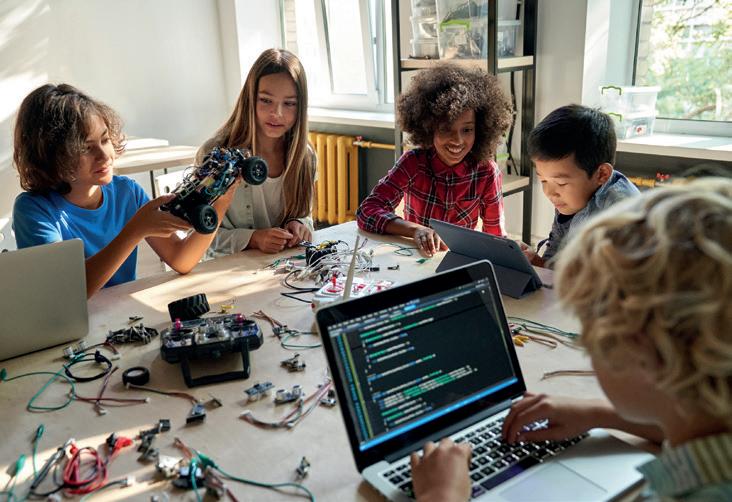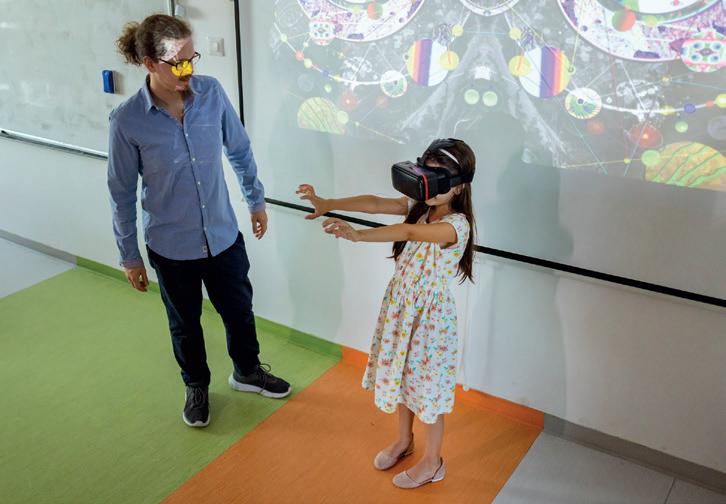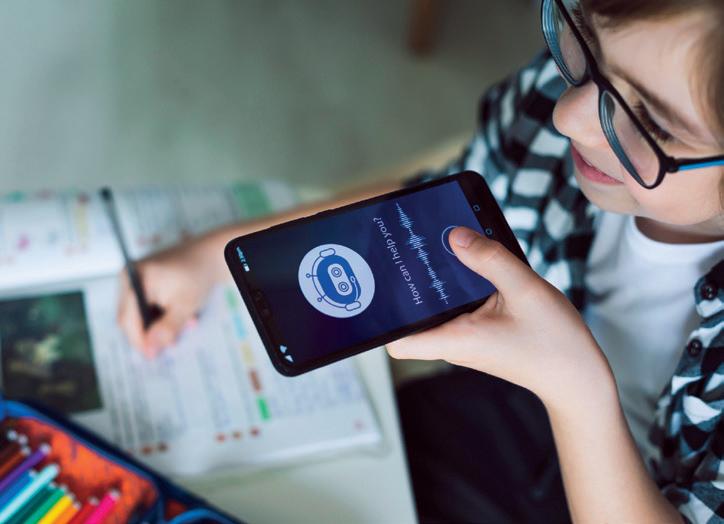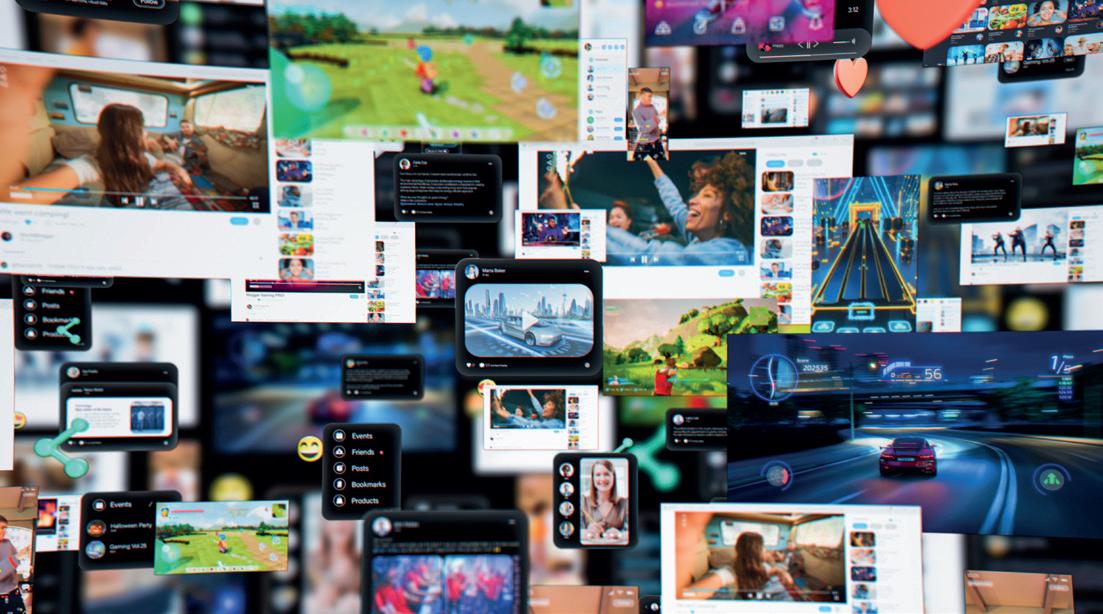
3 minute read
Supporting Neurodiversity with AI
How we can use AI to support students’ needs
When I first started using AI, I treated it like a Tamagotchi, the digital pet. I alternated between obsessing over it, worrying if I was using it correctly and thenlike my houseplants - forgetting it existed entirely. Perhaps it’s a neurodivergent thing, switching between hyperfocus and total object permanence failure.
I’m neurodivergent and I use AI to augment my life, my art, my parenting and my passions - even collaborating with DALL-E to design a midlife crisis tattoo that’s now inked on my forearm. As an excited online school founder, qualified teacher and a mother of three neurospicy teens, I explore how AI can support (not replace) human connection, creativity and wellbeing. I also train teachers and advise parents, tutors and governors on AI’s effective and ethical use.
One of the most powerful ways AI is transforming education is through HyFlex (Hybrid-Flexible) learning - an approach that extends education beyond classroom walls while adapting to each learner’s needs. This model is particularly beneficial for neurodivergent students who thrive when they can work autonomously, hyperfocus on learning, overcome procrastination and engage from a point of interest.
AI offers parents and educators tools to make learning more engaging and aligned to future skills. Speech-to-text and textto-speech tools help dyslexic students access content without frustration. AI-powered tutoring apps adjust in real time to a child’s pace, providing tailored explanations. Platforms like Gauthmath offer step-by-step solutions, making complex maths problems more accessible. Immersive AI platforms like SpiritVR transform how schools approach mindfulness and wellbeing - like a sensory room in a VR headset, offering job interview simulations or public speaking practice.
ChatGPT has become a kind of family companion, both as a practical tool and a source of play. Recently, I’ve been using it at home for a variety of purposes, including generating a Morse code conversation for fun, analysing war medals and family diaries and even offering a second perspective on the tone of an email - I wanted to check that my AuDHD wasn’t misinterpreting it before I spiralled into rejection sensitivity. In these ways, AI doesn’t replace human connection but enhances it, helping us engage more deeply, challenge assumptions and spark new ways of seeing the world. At the same time, however, we must be cautious of anthropomorphising AI - a particular concern for neurodivergent individuals who may form attachments or dependencies on AI responses. Maintaining digital hygiene, such as keeping phones out of bedrooms and encouraging open conversations about technology, helps establish healthy boundaries. AI, with its dopaminefueled haptics and pulsing dots, can feed that cycle. But rather than demanding maintenance, AI can free up space for what truly matters.

If AI helps teachers spend more time with students instead of marking papers, it can shift their focus toward inspiring students and sparking imagination rather than generating data for assessments. AI also helps students understand their own cognitive processes through peer and self-assessment, developing skills in analysis, reflection and independent learning. This means the role of the teacher becomes less about grading and more about guiding students, modelling curiosity and fostering meaningful discussions that AI can’t replace. AI bridges traditional learning and future skills. It helps children engage more actively, whether by transforming dull revision into a song, using mind palace techniques to structure information or generating case study simulations that build problem-solving skills. These tools enhance executive function by making learning interactive and enjoyable; after all, knowledge only sticks when we experience and apply it.

James Lovelock, who coined the term ‘Novacene’, imagined a world where humans and AI co-evolve, amplifying each other’s strengths. My consultancy, The Novacene, is helping schools build Schools in the Cloud - not just to extend learning beyond walls but to prepare students for a future deeply intertwined with AI. Future jobs won’t just require technical skills; they will require a mindset shift toward Gaia theory - understanding that humans, AI and nature are interconnected. The path to net zero, climate solutions and sustainable industries will depend on people who can collaborate with AI to solve systemic challenges - therefore, our children and schools must be taught how to work with AI, rather than fear it.
I remember my mum queuing outside Toys “R” Us so my brother and I could be part of the Tamagotchi craze. It was a perfect example of play: a parent embracing a bizarre new technology just for fun. Perhaps that’s how we should approach AI too: not with fear, but with curiosity.
Our children need to treat AI a bit like a Tamagotchi - feeding it thoughtfully, clearing its virtual poop and knowing when to put it down. We’ve evolved since the ’90s, but the concept remains: technology can be playful and learning how to engage with it responsibly is part of the experience.
AI isn’t just something to passively consume; it’s something we must shape, direct and co-create with to build a more sustainable future on our planet.

KIRSTEN STEVENS Neurodiversity Consultant
www.thenovacene.com
CLICK HERE to listen to our Education Corner Podcast with Kate Griggs, Founder and CEO of Made by Dyslexia











